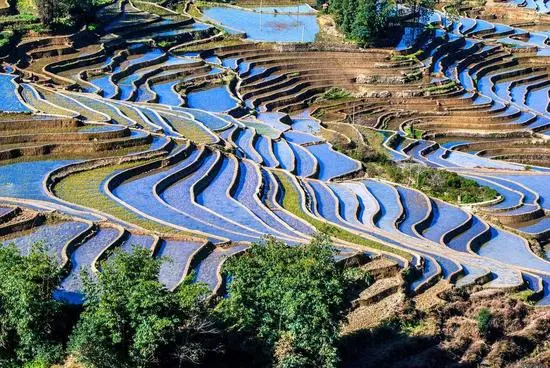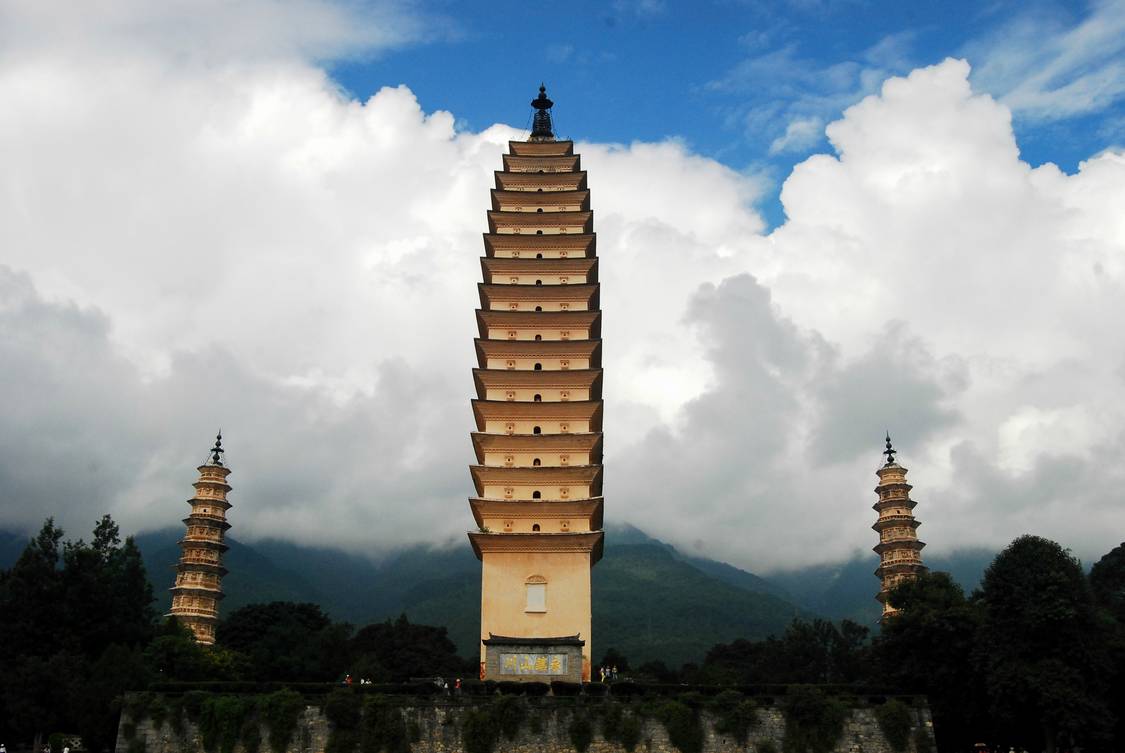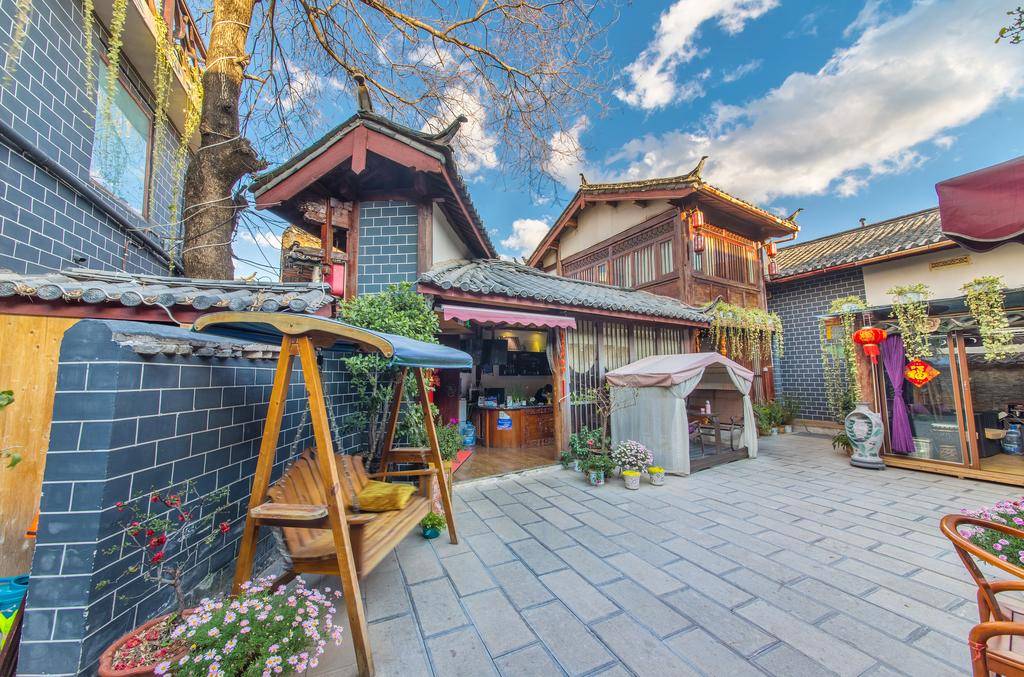Dali Ancient City is located at the foot of the picturesque Cangshan Mountain. It was the capital of the ancient Nanzhao and Dali Kingdoms. The streets within the city are laid out in a typical grid pattern, making it the core tourist area of Dali. The weather in Dali is pleasant in March and April, making it the best time to visit and enjoy the scenery and local customs. Here, visitors can engage in activities like gardening, playing with cats and dogs, shopping in small stores, and relaxing in bars, all while enjoying a leisurely and artistic lifestyle.
Chongsheng Temple was a royal temple during the Dali Kingdom period and is the largest ancient temple in Dali's history. Chongsheng Temple is famous for its three pagodas, one large and two small, also known as the 'Three Pagodas of Dali'. It is one of the most famous Buddhist pagodas in China. The three ancient pagodas are considered landmarks of Dali, a testament to the flourishing of Buddhism in Dali, and one of the scenic highlights of Cangshan Mountain and Erhai Lake. The temple seen today is a reconstruction, while the three pagodas are relics with a history of over a thousand years, making them the main attraction for visitors.
Dali Tianlong Babu Film City is located on the west side of Dali Ancient City, backed by Cangshan Mountain. It is the main filming location for the TV series 'Tianlong Babu'. The film city is composed of three major areas: Dali Kingdom, Liao Kingdom, and the Western Xia Palace and Jurchen Tribe. It was built as a large-scale film shooting base for the filming of 'Tianlong Babu'. In addition, films and TV series such as 'Tea Horse Road', 'Legend of Yin and Shang', 'Princess of Dali', 'Perfect Ten', and 'The Four Young Detectives' were also shot here.
Xizhou Ancient Town is located to the west of Cangshan Mountain and to the east of Erhai Lake. It is the hometown of the movie 'Five Golden Flowers'. With a history of over a thousand years, it is a Bai ethnic historical and cultural town, rich in ethnic customs and historical cultural atmosphere. The Bai ethnic residences are a major feature of Xizhou, having gone through periods such as the Ming and Qing dynasties. The Yan and Yang families' residences are popular spots for visitors. Xizhou's crispy baba is a famous local snack, known for its color, aroma, and taste. It's worth a try.
Huanhai
Huanhai generally has two directions, with the east gate of Dali Ancient City as the boundary. To the south is the Xiaguan direction, and to the north is the Shuanglang direction. If you want to circle the sea, you usually need to set off around 8 o'clock. You can pay attention to the car rental shops while strolling in the ancient city the night before. Generally, people choose to rent bicycles, electric bikes, or even cars to circle Erhai Lake. In autumn, the rice flowers on both sides of the West Coast Road are fragrant, resembling a pastoral harvest scene. In winter, you can see the snow on Cangshan Mountain from a distance.
One of the three islands in Erhai Lake, located in the prime area of the Cang'er National Scenic Area. It is adjacent to the famous Buddhist holy site Jizu Mountain to the east, connects to Shibao Mountain to the north, links to Dali to the south, and faces Cangshan Mountain and Erhai Lake to the west, occupying unique tourism resources. It encapsulates thousands of years of Dali's cultural heritage, showcasing the imperial splendor of the Nanzhao and Dali dynasties over six hundred years.
Erhai Lake
One of the four famous scenic spots of Dali's 'Wind, Flower, Snow, and Moon'. Its shape resembles an ear and it is a plateau lake formed by the collapse of the West Er River. It consists of three islands, four continents, five lakes, and nine bends. The lake water is crystal clear, known as 'a flawless jade among the mountains'. Popular villages around the lake include Shuanglang, known for 'Erhai Divine Light', Caicun, the filming location of 'Breakup Buddies', and Xizhou, characterized by Bai ethnic residential buildings.
Nuodeng Town
Nuodeng Village is located at the southern end of the Three Parallel Rivers of Yunnan Protected Areas, a World Natural Heritage site, in Yunlong County, Yunnan Province. It is 165 kilometers away from the capital of Dali Prefecture and has convenient transportation. It was the earliest economic hub of the Bai ethnic group and is the oldest village in northwest Yunnan. It is also the only village mentioned in the earliest historical records of Yunnan Province, the 'Man Shu,' that still retains its original name. The village preserves a large number of buildings from the Ming and Qing dynasties, as well as the famous Taoist architectural complex of the Jade Emperor Pavilion. This village gained popularity due to the documentary 'A Bite of China,' but it has not yet become overly commercialized. Many inns are converted from original residential houses.
Yunlong
Yunlong County is located in the western part of Yunnan Province, situated in the Lancang River valley area at the southern end of the Hengduan Mountains. Yunlong is a region with a diverse population, home to more than ten ethnic groups including Bai, Han, Yi, Miao, Hui, Dai, Lisu, and Achang.
Jianchuan
Jianchuan County is located in the northwest of Yunnan Province, in the northern part of Dali Prefecture. The terrain within the county is high in the northwest and low in the southeast. The main mountain ranges include Laojun Mountain, Shibao Mountain, Jinhua Mountain, Yanlu Mountain, and Xueban Mountain.
Shaxi Town is located in the southeast of Jianchuan County, 32 kilometers away from the county seat. It is situated between the three major tourist areas of Dali, Lijiang, and Shangri-La. To the southeast, it borders Eryuan County, and to the northwest, it is adjacent to Misha, Yangcen, and Diannan of Jianchuan County.
Lijiang
Lijiang is a place where multiple ethnic groups live together. Besides the Han nationality, there are 12 indigenous ethnic minorities and 22 ethnic minorities in total. Lijiang is a famous tourist city, home to three world heritage sites: the Old Town of Lijiang (a UNESCO World Cultural Heritage site), the Three Parallel Rivers (a UNESCO World Natural Heritage site), and the Dongba Ancient Books and Manuscripts of the Naxi Ethnic Group (a UNESCO Memory of the World Heritage site).
Shuanglang Town is located on the northeast shore of Erhai Lake, close to the rippling Erhai Lake, with a distant view of the nineteen peaks of Cangshan Mountain, gathering the essence of Cangshan and Erhai scenery in one place. The main attractions in the town, Yuji Island and Nanzhao Island, are great places to watch the sunset. Boating on the lake in the evening is very pleasant. The town's diverse architectural styles are also a major highlight, including the Sun Palace and Moon Palace of dancer Yang Liping, and the Qinglu of painter Zhao Qing. It is recommended to stay overnight when visiting Shuanglang. In the evening, boating on the lake and watching the shimmering light and shadow offers a unique flavor.





























